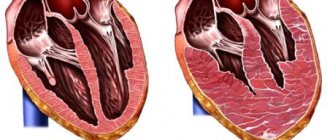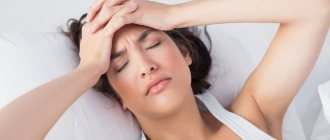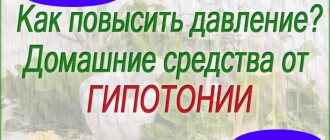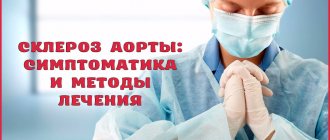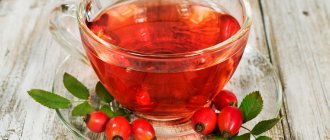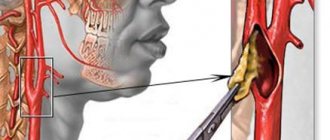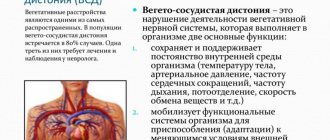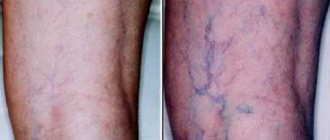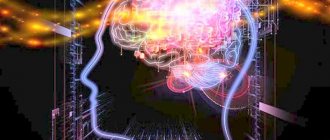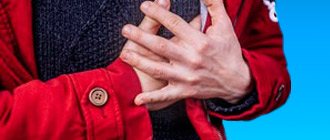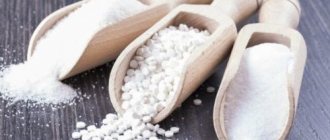Arrhythmia is a process of disruption of the normal functioning of the rhythm (frequency) of heart contraction, slowing down beats or, conversely, increasing beats.
We will explain to you in detail how to competently use healing, which will involve folk remedies for cardiac arrhythmia. When your body is in a state of stability and complete rest, the reduction in the heart rate of your heart should be maintained within the norm of 60-80 rhythmic beats per 60 seconds of time. For older people, the norm is usually within 80 beats, while for athletes it is closer to the lower figure. If suddenly your pulse becomes less than 50 beats, or more than 110 beats, then you need to dial an ambulance in your hometown.
Heart disease ranks first and affects people's lives more than any other disease. It has long been proven that, especially in our time, usually every fifth seemingly healthy person on our planet is affected by arrhythmia. Due to the dismal prognosis, you must learn how to treat arrhythmia using folk remedies.
First, let's look at the types of arrhythmia.
Bradycardia is when the heart beats 60 times in a stable, calm state and even fewer beats after 60 seconds. When physical or even emotional stress is placed on your body, your pulse during bradycardia can be 45 times for a full 60 seconds. ( The most effective folk recipes for bradycardia ) IMPORTANT! Symptoms include weakness, fainting, cold sweat, and pain in the area of your heart.
Tachycardia is when the heart beats 90 or more beats in 60 seconds in a stable, calm state. IMPORTANT! Symptoms include heaviness in the area of your heart, persistent palpitations, a feeling as if you are a little short of air, weakness sets in, a drop in appetite and even mood, shortness of breath.
Extrasystole is a disturbance in the heart rhythm, which is characterized by contraction in the heart, and at other times it can occur in its individual parts. IMPORTANT! Symptoms include a strong shock (or shocks) in the heart, or, conversely, a feeling of cardiac arrest, a feeling of lack of inhalation of air.
Atrial fibrillation is a more common arrhythmia, in which there is a disruption in the rhythm of the heart, accompanied by various (chaotic) excitations, and contractions of the atria also occur. IMPORTANT! The symptoms that occur are completely individual for everyone. Some people experience a more rapid heartbeat, which increases significantly when the body is tense. Also accompanied by pain in the heart with various interruptions.
Briefly about the pathology
Before we talk about how to cure cardiac arrhythmia, we need to briefly discuss the specifics of this disorder. In general, this term refers to heart disorders that vary in manifestations and mechanisms of occurrence and relate to its rhythm.
Arrhythmias can cause severe disruption of the activity of this muscle and other organs. Often this disorder turns out to be a complication or consequence of serious pathologies.
Symptoms of arrhythmias can be summarized as follows:
- A distinct feeling of heartbeat.
- Weakness.
- Dizziness.
- Interruptions and freezing of the heart.
- Chest pain and pressure.
- Fainting.
- Dyspnea.
If arrhythmia is not treated, the disease will begin to progress. And this is fraught with attacks of angina pectoris, thromboembolism, pulmonary edema, acute heart failure or even death.
What causes cardiac arrhythmia? In general, this pathology can be either a consequence of cardiovascular pathology or an independent phenomenon. That is, the reason lies either in damage to the heart muscle or in other changes in the body: problems with the central nervous system, diseases of the thyroid gland or gastrointestinal tract, electrolyte imbalance, chest trauma, etc.
Advice from a cardiologist
I bring to your attention a few simple tips that will have a beneficial effect on the condition of your cardiovascular system.
Tip 1
Plain water has a very positive effect on the cardiovascular system. Therefore, if possible, swim more. In summer it is useful to relax at the sea, lake, river, and in winter you can visit the pool.
Regular swimming lessons will give results very quickly. You will feel it yourself literally after a couple of months of such classes.
Tip 2
To strengthen the heart, it is useful to do gymnastics for the capillaries. This gymnastics is done as follows:
- Lying on a flat, hard bed, you need to raise your legs and arms up and perform vibrating movements with them.
- First up to the count of 30, and over time more. Ideally, bring this exercise to a count of 250, after which you will be able to notice an improvement in your overall condition.
Gymnastics for capillaries has the same effect on the heart as a 5-kilometer walk.
Tip 3
Try to eat more foods containing vitamins that have a beneficial effect on the heart.
These include: Sometimes, a simple rosehip decoction, with regular use, can work wonders. It can also be used for cardiac arrhythmia.
The decoction is prepared as follows:
- 50 grams of rose hips per 1 liter. Boil water for 10 minutes.
- After this, leave the broth in a thermos for another 6 hours.
This decoction can be drunk in any quantity, preferably every day. In about a month to a month and a half you will feel a noticeable improvement.
Viburnum can be used like this:
- 3 cups of pureed viburnum berries should be poured with 2 liters of boiled water and left to infuse for 6 hours.
- After this, mix with honey (0.5 kg). Intake – 70 grams per day.
Tachycardia
Now we can talk about how to cure cardiac arrhythmia. Tachycardia is a type of pathology in which the rhythm exceeds 90 beats per minute.
Treatment involves taking sedatives, the most effective of which are Relanium, Phenobarbital and Diazepam. Doctors often prescribe herbal medications: Novo-Passit, Persen, valerian and motherwort extracts, hawthorn tincture.
It is mandatory to take beta-blockers. They regulate the effects of norepinephrine and adrenaline on the body. Here are the recommended products:
- Bisoprolol (“Bisomor”, “Coronal”, “Concor”).
- Metoprolol (Vasocardin, Logimax, Betaloc).
- Atenolol (“Tenolol” and “Prinorm”).
- Nebivolol (“Binelol” and “Nebilet”).
- Timolol (“Ocumed” and “Arutimol”).
- Propranolol (“Anaprilin”, “Propamin” and “Noloten”).
- Nadolol (“Korgard”).
- Oxprenolol (Trazicor and Koretal).
When talking about how to cure cardiac arrhythmia, it is necessary to make a reservation that for tachycardia, medications based on bisoprolol and propranolol are the most effective.
Using berries to combat illness
Treatment of atrial fibrillation is carried out with the use of various berry fruits.
Healing decoctions and tinctures are prepared from them. Some of them are sold ready-made in pharmacy chains. A decoction of viburnum berries helps cure the disease. It is prepared as follows: a 200 ml glass filled with the fruits of the plant is poured with boiling water. After this, everything is placed on a gas stove, and the fire should be medium.
After the solution boils, cover it with a tight lid, and then it must cool. Use the medicine 3 times a day at the dose prescribed by the doctor. This decoction can also be used to prevent disease.
It is recommended to use hawthorn tincture for this ailment. The fruits of this plant are used to treat various diseases of the cardiovascular system.
For atrial fibrillation, the traditional option is used - a tincture, which is sold in the pharmacy chain. The patient should drink it 3 times every 24 hours before meals. You can find out the dosage from your doctor.
Dill seeds, from which a decoction is made, are often recommended for the treatment of illness. To do this, pour 1/3 cup of the plant seeds with a glass of boiling water.
Then close the container with a tight lid and wrap it in a warm rag. Infusion lasts 1/3 hour. After this, the broth must be strained. Drink the medicine before meals 3 times a day, and the dose is agreed with the attending physician.
Bradycardia
This pathology is characterized by a slow heartbeat (less than 60 beats per minute). The following drugs are actively used in its treatment:
- "Isoprenaline." It is recommended to administer intravenously. This is an analogue of "Adrenaline". The drug accelerates the contraction of the heart muscle, increases the tone of the sympathetic nervous system and stimulates the adrenergic receptors of the myocardium. The doctor determines the dosage individually, the frequency of administration is 2-4 times a day.
- "Izadrin." Available in the form of injection solution and tablets. It has an auxiliary effect to the main therapy, since the active substance does not affect the heart rate. It is recommended to take it in the form of tablets, which should be placed under the tongue. 2-3 times a day is enough.
- "Ephedrine hydrochloride." Increases blood pressure by constricting blood vessels. Effective for impaired myocardial conductivity. You should take 1 tablet 2-4 times a day. If a patient is diagnosed with atherosclerotic vascular disease, has problems with the thyroid gland or heart disease of an organic nature, he is prohibited from Ephedrine hydrochloride.
- Orciprenaline sulfate (“Astmopent”). This is an analogue of “Izadrina”. And it is much easier to tolerate, and it does not cause any unwanted side reactions. The only contraindication is atherosclerosis. You need to take the drug 0.5-1 tablet 3-4 times a day.
- Ipratropium bromide. Pharmacy name: “Ipratropium”. It is effective in the fight against sinus bradycardia, since it has no effect on the central nervous system and does not cause lethargy or drowsiness. Usually prescribed 0.5-1 tablet 2-4 times a day.
Reasons for the failure
The main culprit of disturbances in the conduction system of the heart, causing atrial fibrillation, is a weakened sinus node (natural pacemaker). Its functions compensate for the emerging foci of ectopic (replacement) signals. Various external and internal factors, which are divided into cardiac and non-cardiac, influence the development of the failure. The first category includes the following reasons:
- Hypertension is characterized by high blood pressure. The heart works faster, pushing a large volume of blood, which is why it gradually hypertrophies (grows). Muscle tissue weakens, which leads to dysfunction of the sinus node and the conduction system as a whole.
- Impaired blood flow through the coronary arteries is the main cause of failures in the conduction of the sinus node impulse. The heart muscle does not receive the required amount of nutrients, resulting in arrhythmia.
- Inflammatory diseases disrupt the conduction of electrical impulses. The essence of the problem is damage to the walls of the heart muscle, due to which the signal cannot fully pass through.
- Heart surgery is extremely dangerous and leaves behind traces in the form of scar tissue at the site of intervention. They don't conduct the electrical impulse, so it has to take other paths, causing an arrhythmia.
- Tumors gradually grow and cause disruptions in the conduction system. The impulse cannot reach its target, which leads to the development of pockets of false signals.
- Heart defects can cause atrial fibrillation even in young people. Particularly common is prolapse (incomplete closure) of the valves, due to which a small amount of blood enters the atria at the time of contraction of the ventricles. Over the years, individual chambers of the heart muscle hypertrophy, which leads to arrhythmia and other pathological processes. No less noticeable among congenital defects are insufficiently developed vessels feeding the myocardium. Because of them, the patient may experience cardiac ischemia.
- Heart failure can be both a consequence of atrial fibrillation and its trigger. The occurrence of the pathology is associated with congenital defects and hypertension. Because of it, the automaticity of the heart is disrupted, which manifests itself in various failures.
A group of non-cardiac factors influencing the development of arrhythmia:
- Abuse of bad habits has a detrimental effect on the heart muscle and blood vessels. The main triggers for heart failure are alcohol, cigarettes and drugs. Because of them, organic damage gradually develops.
- Stressful situations provoke disruptions in the nervous system, which is the main regulator of heart rate. No less dangerous is the excessive release of adrenaline, which is intensely synthesized under their influence and increases the pulse rate.
- Physical overload must be compensated. The heart has to work much harder to increase blood flow to muscle tissue. The wiring system malfunctions due to increased load.
- Abuse of caffeine and strong tea leads to the development of tachycardia. It is characterized by rapid heartbeat, which can subsequently cause atrial fibrillation.
- Medicines that have antiarrhythmic effects (diuretics, adrenergic stimulants, calcium blockers and other drugs) provoke disruptions in the electrolyte balance. The impulse begins to be carried out worse or problems arise with its creation.
- Diseases caused by infections are manifested by an increase in body temperature. One degree above normal increases the heart rate by 10 beats per minute. Their inherent intoxication is no less dangerous. It provokes disruptions in the autonomic (vegetative) part of the nervous system. The combined effect of these factors leads to the development of arrhythmia.
- Dysfunction of the thyroid gland contributes to increased synthesis of its hormones. Because of them, the heart rate increases and blood vessels constrict.
- Disturbances in electrolyte balance often develop due to strict diets, improperly formulated diets and prolonged fasting. A person develops a deficiency of microelements necessary for the normal functioning of the heart (potassium, calcium, magnesium). Their lack leads to disruption of impulse conduction.
- Chronic respiratory diseases are one of the main causes of oxygen starvation, which causes disruptions in the functioning of the heart. The natural pacemaker ceases to adequately perform its functions and arrhythmia develops.
- Diabetes mellitus, which results from impaired insulin perception or production, is often accompanied by obesity. Because of it, metabolic disruptions occur and blood vessels are destroyed under the influence of high sugar levels.
- Sleep apnea manifests itself in the form of stopping breathing for a short period of time (5-10 seconds). This phenomenon leads to the development of oxygen starvation, which causes disturbances in the heart rhythm.
- Electric shock can cause severe disruption to the transmission of impulses through the wiring system. Usually the patient experiences erratic contraction of the atria or the heart stops altogether.
Extrasystole
This type of arrhythmia is manifested by extraordinary heart contractions. In this case, therapy involves a gradual transition from weak drugs to strong ones. Treatment begins with taking sedatives, but if they do not help, the patient is prescribed antiarrhythmic drugs.
What to take for cardiac arrhythmia is decided by the doctor, but here are the medications that are usually prescribed:
- Sedatives that prevent excessive stimulation of extrasystole foci. These drugs affect brain signals.
- Magnesium and potassium containing drugs that strengthen the heart muscle. The most effective are “Panangin” and “Asparkam”. If the patient is taking diuretics that wash out electrolytes, then intravenous administration of these medications is prescribed.
- If extrasystole occurs against the background of bradycardia, then drugs are prescribed that contain belladonna (“Atropine” in particular).
- Antiarrhythmic drugs. Bretilium, Moracizine, Amiodarone and Propafenone work best. Prescribed to people with rhythm disturbances in the ventricles of the heart and atria. There are a number of serious contraindications and possible side effects.
- In case of extrasystole as a result of tachycardia, the use of glycosides - medicines from digitalis - is indicated. They are administered in small quantities.
It is worth listing some more drugs that help cope with extrasystole, since we are talking about the symptoms, causes and treatment of cardiac arrhythmia. Metoprolol, Cardanol, Betacardin, Sinopril, Pyramil, Enalapril, Amprilan, Moracizine, Bretilium, Nifedipine, Cinnarizine, Verapamil have proven themselves well. , "Propafenone" and "Amiodarone".
Application of traditional medicine
In the case of atrial fibrillation, treatment with folk remedies is in addition to the medications recommended by the doctor.
Traditional medicine cannot replace full-fledged treatment, but it can speed it up. You can learn how to treat atrial fibrillation with folk remedies by consulting a doctor. Typically, various medicinal herbs and berries are used for these purposes. Folk remedies for atrial fibrillation are used in the form of various decoctions and tinctures. When making them, you must strictly adhere to the recommended recipe. Experiments in this case are inappropriate.
Before using traditional medicine for atrial fibrillation, you must be examined for allergies to substances found in various berries or plants.
Traditional recipes should be used under the supervision of a doctor after symptoms have been identified and treatment of the disease has begun with the use of drugs prescribed by the attending doctor.
Atrial fibrillation
This is a very dangerous pathology, characterized by chaotic contractions of individual muscle fibers. With atrial fibrillation, the pulse can increase to 400 beats per minute, in rare cases – up to 600.
This type of pathology occurs against the background of other pathologies of the cardiovascular system or as a consequence of insufficient functioning of the thyroid gland. Rarely, this disorder becomes a consequence of pathology of internal organs.
What to take for this type of cardiac arrhythmia? The main goal of therapy is to adjust the heart rate. Otherwise, the risk of systemic bleeding, ischemic stroke and even sudden death increases. Therefore, it is very important to reduce the ventricular rate to 80 beats per minute.
You cannot do without taking the notorious beta-blockers - in this case, Metoprolol and Esmolol are indicated. The use of calcium blockers is also indicated: Diltiazem and Verapamil.
"Cordarone" demonstrates greater effectiveness. But this remedy is only suitable for temporary therapy. If you use it for a long time in treatment, complications may arise with the internal systems of the body. Cordarone is also contraindicated if the patient has an individual intolerance to iodine or a lack of potassium and magnesium.
Digoxin is recommended for long-term therapy - it is indispensable for people who need constant monitoring of ventricular contractions and pulse. It is even approved for use in patients with heart failure. Digoxin not only eliminates arrhythmia, it also increases the ejection fraction, stimulating muscle function.
However, Digoxin is poorly excreted from the body, which is why slow intoxication occurs. Therefore, if a drug is prescribed for long-term therapy, it is necessary to monitor the amount of the active substance in the blood. If the concentration is too high, you will have to switch to symptomatic therapy.
Description of the pathology
Cardiac arrhythmia is a malfunction in cardiac functionality, manifested in the form of changes in the frequency, rhythm and sequence of heart contractions. She
occurs as a result of metabolic, vegetative, endocrine diseases, as well as disturbances in the functionality of the heart itself.
If you refuse treatment, serious complications can arise that worsen a person’s general well-being, even leading to death, so you should not expect that cardiac problems will disappear spontaneously. If such disturbances occur, you should immediately contact a cardiologist. Advice from friends, acquaintances or online consultants in this case will be useless or ineffective. If you refuse treatment because you trust the people described above, you may experience improvements in your health, but this will not reduce the risk of complications, because the best way to eliminate the disease is to get rid of its source. This factor, like the form of arrhythmia, is identified through a thorough instrumental study.
Cardiac arrhythmia is divided into the following types (forms):
- Bradycardia is a decrease in heart rate. For arrhythmia in this form, a pulse is recorded with a frequency of less than 60 beats per minute.
- Tachycardia is the opposite of bradycardia. In this case, the person’s pulse exceeds 90 beats.
- Heart block is the most severe condition for arrhythmia. The person's pulse is weakly felt or not felt at all.
- Extrasystole is characterized by the appearance of extraordinary heart contractions, as well as an increase in their number.
- Atrial fibrillation is an equally dangerous type of disease. The patient experiences heart palpitations and an uneven heart rate.
These factors can lead to cardiac arrest, so you need to consult a doctor as soon as possible and determine the causes, treatment with folk remedies and the type of arrhythmia.
Causes of arrhythmia in women
The causes of cardiac arrhythmia in women are directly related to age-related changes in the body, stress, and increased emotionality. Consequently, the older the woman, the greater the risk of acquiring arrhythmia increases. Women can also suffer from this disease due to changes in hormonal levels. Most often this is observed during pregnancy and during the period of restructuring of the body (during menopause). Abnormal heart rhythm occurs due to an increase in the volume of circulating blood, forcing the heart to contract twice as fast.
The progression of arrhythmia in women is due to an emotional reaction to the disease.
Causes of pathology in men
Men are twice as likely to get the disease, because they are more prone to bad habits.
Arrhythmia in men occurs when:
- Overeating.
- With excess body weight.
- Poor nutrition, especially if a man likes frequent snacking.
- Abuse of alcoholic beverages, smoking.
- A sharp transition from active to passive life.
Men are more likely to experience arrhythmia at night. This factor requires a more careful attitude towards your own health, because an unexpected night attack can result in fatal consequences.
Signs of arrhythmia in women
Signs of cardiac arrhythmia in women can be very diverse. This is due to reasons that lead the heart to malfunction. The individual characteristics of the body are taken into account, so in some cases the symptoms of patients may be different, weakly or strongly expressed. It is currently known that the female body is more sensitive to arrhythmia than the male body.
Most often, the following symptoms of cardiac arrhythmia are recorded in women:
- Aching pain in the chest area.
- Regular dizziness and pain.
- Violation of heart rhythm and frequency of its contractions.
- “Trembling” and discomfort in the heart area, right-sided heaviness under the rib.
- Swelling of the lower extremities.
- Fainting.
- Depression, phobias, mood swings.
These symptoms of cardiac arrhythmia in women are most often recorded at the age of 50-55 years. If such deviations occur, it is recommended to immediately consult a specialist and select effective therapy. Timely contact with a cardiologist is the key to successful restoration of heart function.
Symptoms of pathology in men
The main signs of cardiac arrhythmia in men are fading or excessive fluttering of the heart. For the most part, the symptoms of cardiac arrhythmia in men are the same
with female signs of the disease. But they are less painful, as a result of which complications can be provoked and the period for completely curing the disease can be missed.
Men are advised to be more responsible about their health and not to neglect preventive examinations with a cardiologist. If you feel any abnormalities, immediately contact a specialist and strictly follow the treatment regimen prescribed by your doctor.
Heart blocks
This is the name for disruptions in the rhythm of contractions that occur due to problems associated with the passage of nerve impulses through the muscle conduction system. Treatment always depends on the severity of the blockade. Here are the brief principles:
- The second degree of type 2 involves constant stimulation with an external pacemaker. At an early stage, this disease can be stopped, but only if the cause does not lie in heredity. Often this disease develops as a result of drug or medication abuse.
- If the blockage is caused by another heart pathology, the person may have a pacemaker installed.
- The third degree of the disease cannot be treated. Therapy is aimed at relieving symptoms and improving quality of life. The goal of treatment is to prevent cardiac arrest. So a pacemaker is installed in all cases.
Incomplete second- and first-degree blockades are asymptomatic and therefore require only observation and routine examinations. Although first they need to be identified, but they are detected only during an ECG.
The greatest risk to human life is posed by high-degree blockades, as well as rapidly progressing diseases. Because in such cases, impaired blood flow and heart failure are observed.
Surgery to install a pacemaker is always performed urgently. The procedure is performed using Atropine, Adrenaline, Theophylline and Dopamine. Rehabilitation involves the mandatory use of m-anticholinergic blockers, beta-agonists and sympathomimetics.
Description of the disease
Atrial fibrillation or atrial fibrillation is the most common heart disease in the modern world. If we consider the pathology from a medical point of view, it is a disturbance in the rhythm of the heart muscle, which is provoked by electrical impulses in the atria. This condition develops against the background of insufficient contraction of the myocardium, which provokes blood stagnation and reduces oxygen supply to the heart.
There are such forms of atrial fibrillation:
- Paroxysmal - this type is characterized by rhythm disturbances for a couple of minutes, but not longer than 7 days.
- Peristent (persistent) – lasts more than a week.
- Constant - also called chronic - lasts for years.
Note! Violations are caused by any type of pathology listed above. To minimize their impact, folk remedies are often used for atrial fibrillation, which can be both preventive and therapeutic.
In traditional treatment, extremely simple products are used
Diet
It is also necessary to briefly talk about the specifics of nutrition for cardiac arrhythmia. The diet should be different from the usual one - the patient must actively consume foods with a high content of calcium, potassium, magnesium, as well as other microelements necessary for the functioning of the heart.
Also, by adjusting your diet, you can extinguish the receptors of the vagus nerve. After all, it is he who blocks or inhibits the function of the sinus node, thereby provoking malfunctions of the cardiac system.
In addition, healthy eating is a way to combat excess weight and improve metabolic processes. These factors are also the main provocateurs of cardiac failure.
How to cure cardiac arrhythmia at home? Full recovery is a purely individual matter, but what every person suffering from this disease definitely needs to do is include the following products in their menu:
- Fruits rich in microelements and vitamins. These are pears, plums, bananas, raspberries, apples, oranges and currants.
- Vegetables: cabbage, tomatoes, pumpkin, cucumbers, potatoes, beans, beets, red peppers.
- Boiled meat (turkey, chicken and rabbit) and lean fish (steamed, preferably).
- Honey.
- Dairy products - yogurt and low-fat cottage cheese.
- Rosemary, as it strengthens blood vessels.
- Broccoli, because it contains many microelements and vitamins (fiber, iron, phosphorus, among others).
- Avocado, because it contains copper and iron in huge quantities, as well as enzymes that stop the development of arrhythmia.
- Grapefruit, because it is considered the most valuable source of glycosides and plant fiber. Eating it regularly helps strengthen the heart muscle and normalize the metabolic process.
- Parsley, because it is an excellent diuretic, indispensable for arrhythmia.
Prohibited foods also need to be listed, since we are talking about how to cure heart arrhythmia. It is always recommended to give up smoked meats, offal, fatty meat, pickled and salted products, fatty fermented milk, semi-finished products, canned food, eggs (only steamed and soft-boiled omelettes are allowed) and spices.
Tinctures for arrhythmia
Medicinal plants are used for alcoholic tinctures, the intake of which (of course, in moderate doses) can have a beneficial effect on atrial fibrillation. The use of inexpensive pharmaceutical tinctures of motherwort, valerian, and hawthorn is also effective (you can supplement them with infusions of peony and cloves). It is good to take the drugs in combination, as they complement each other’s actions:
- Valerian relaxes the central nervous system.
- Hawthorn improves the functioning of the heart muscle.
- Motherwort normalizes sleep and relieves emotional excitability.
To prevent the development of arrhythmia, it is enough to take one teaspoon of the drug per day with a small amount of water. Alcohol tinctures can cause drowsiness, so it is recommended to use them at night.
A mix of four inexpensive drugs has a calming effect on the body, lowers blood pressure, slows the heart rate, and prevents the formation of blood clots.
The following video will tell you how to properly prepare a tincture from several components and take it:
You should take alcohol tinctures with atrial fibrillation with caution, because Alcohol abuse is one of the non-cardiac factors in the possible occurrence of the disease. This causes organic damage to occur, causing the heart to malfunction.
Folk remedies
Much has been said above about the causes, symptoms and treatment of cardiac arrhythmia. Now we should briefly discuss folk remedies, the use of which is aimed at combating this pathology and strengthening the muscle as a whole. Here are some simple recipes:
- Mix 400 grams of walnuts, dried apricots and light raisins. Grind in a blender, add finely chopped lemon (along with the peel), mix with May honey (7 tbsp.). Leave for three hours, put in the refrigerator. Take 1 tbsp. l. in the morning and in the evening.
- Mix squeezed black radish juice with honey in equal proportions. Take 15 ml three times a day before meals.
- Take 100 grams of any berries that are good for the heart (listed earlier) and pour a liter of boiling water. Let it brew for 30 minutes. Then add honey (3 tbsp). Drink during the day instead of tea.
- Brew 2 tsp boiling water with two glasses. calendula and leave in a thermos for an hour. Drink 4 times a day, 100 ml.
- Brew rose hips (2 tablespoons) with a glass of boiling water, then leave for one hour. Then strain. Drink the resulting infusion an hour before breakfast.
- Pour 40 grams of lovage root with cold water (4 cups). Let it brew for one night. In the morning, strain and drink the entire volume during the day.
- Mix chamomile, mint and valerian in equal proportions. Then take 1 tbsp. l. collection and pour a glass of boiling water. Leave in a thermos for at least 3 hours. Then strain. Drink the entire volume before bed, you can add honey.
Of course, these are not all effective folk remedies - only some of the most well-known. They are not primary healing agents and are considered only a therapeutic adjunct to the tablets. How to treat cardiac arrhythmia is determined by the doctor, and you will definitely have to consult with him regarding the advisability of using traditional methods.
Tips for using folk remedies for treating atrial fibrillation
- The presented recipes for traditional treatment can only be used after consulting a doctor.
- You need to immediately prepare yourself that you will have to take the medications in courses, otherwise there will be no result from taking it once or twice.
- Properly compiled recipes usually contain recommendations for use that must be followed with utmost precision.
- Preference should be given to those recipes that indicate cooking in a water bath; in such cases, the largest amount of substances necessary for the body will be preserved.
- You should purchase or collect plants only in environmentally friendly areas that are no closer than 5 km from the highway, production complex, or waste accumulations. Also, plants collected in cities and numerous settlements are not suitable for treatment.
- When you first take the medicine, you need to carefully monitor your sensations, so that if negative reactions occur, you do not use this folk remedy recipe again.
- The body of any person is more receptive to “its own”, that is, local, plants, so you should not get carried away with exotic components.
In some cases, you have to deal with highly toxic drugs, both pharmacological and herbal. Then it is worth supplementing the treatment with a maintenance drug. In folk medicine, such helpers are considered: thistle, tartar. Decoctions are prepared from these plants, which are then taken according to the doses indicated in the recipe.
Forecast
Is it possible to cure cardiac arrhythmia forever? In fact, the prognosis for disorders of this type is extremely ambiguous. Some arrhythmias do not pose a threat to life and health if they are not associated with organic heart pathology. Others, on the contrary, can lead to ischemic stroke, severe heart failure and other consequences.
Be that as it may, it is impossible to completely cure the disease. But achieving stable remission is real! The main thing is to follow all medical recommendations. The doctor will definitely tell the patient in detail how to deal with cardiac arrhythmia individually, based on the results of the diagnosis he has undergone.
Types of arrhythmia
Tachycardia. Resting heart rate is below 80 beats per minute. When under physical or emotional stress, the heart rate increases. An increase in body temperature may be accompanied by tachycardia. The development mechanism is based on increasing the automatism of the sinus node, which sets the normal rhythm of the heart.
Symptoms: shortness of breath, weakness, dizziness, increased fatigue
Bradycardia. Pulse below 60 beats per minute. It can occur in athletes whose heart muscle is well developed as a result of long-term training. The mechanism of development is a violation of the ability of the sinus node to produce electrical impulses with a frequency of less than 60 beats per minute.
Symptoms: dizziness, fatigue, chest pain, blood pressure fluctuations.
There are also paroxysmal arrhythmias (sudden attacks)
Extrasystole. A common type of arrhythmia, it can also occur in healthy people. It is characterized by premature contraction of the heart and the occurrence of an impulse outside the sinus node. Symptoms: lack of air, excessive sweating, pale skin, heart failure
Atrial fibrillation is the most common, characterized by a pulse of varying frequency and filling as a result of irregular contraction of the atria. The attack can be relieved at home. But it is impossible to delay treatment, since with such a disorder there is a tendency to thrombus formation; if assistance is not provided within the first 24 hours, platelets release platelet thromboblastin, which promotes blood clotting inside the atrium, and blood clots form.
Symptoms: shortness of breath, dizziness, general weakness as a result of heart failure and pain in the heart area.
Most often, patients experience attacks of atrial fibrillation.
Loads
Discussing how cardiac arrhythmia manifests itself and what is generally necessary to treat this disease, we must say a few words about the lifestyle that every person faced with this pathology should adhere to.
It is necessary to give up fast running, walking, physical overexertion, heavy lifting, and also eliminate from your life all factors that provoke anxiety, anxiety and stress. Any of the listed loads are dangerous for cardiac arrhythmia.
It is recommended to take walks in the fresh air more often, relax by the sea and in the forest, and also perform short sets of exercises when you feel well for the purpose of general strengthening.
A selection of recipes for treating arrhythmia using folk remedies
Hello. Today's article will be about the treatment of cardiac arrhythmia with folk remedies.
and in it I will give you some interesting and effective recipes that will help you support your heart.
But first, it would be useful to remember what arrhythmia is and what its danger may be. A healthy heart should contract at a certain rhythm (on average about 60 beats per minute or a little more).
With arrhythmia, the rhythm of heart contractions is disrupted. It can be disrupted either in the direction of increasing contractions (tachycardia) or in the direction of decreasing contractions (bradycardia).
This disease is not considered particularly dangerous, but it should not be neglected. Sometimes it can cause discomfort to the patient and subsequently cause more serious heart problems.
What is arrhythmia?
Any disturbance in the rhythm of heart contractions is called arrhythmia. These may be deviations in speed, sequence, or completeness of contraction.
Why does it happen?
Arrhythmia can be caused by a variety of reasons. The most dangerous type of this disorder is arrhythmias caused by various organic lesions of the heart. With such diseases, the patient requires serious therapeutic treatment, and sometimes it is advisable to use surgical methods.
Advice! As a rule, surgery is necessary if the arrhythmia is caused by a heart defect (congenital or acquired).
Often, arrhythmia is caused by non-cardiac causes. Rhythm disturbances can be caused by hormonal problems (diabetes, hypo- or hyperthyroidism, etc.), disturbances in water-salt or acid-base balance.
External causes can also lead to irregularities in the heart rhythm. Most often, this is:
- intoxication of the body with drugs, alcohol, nicotine;
- abuse of drinks with high caffeine content;
- poor lifestyle, overwork;
- stress, psycho-emotional shocks;
- self-medication.
Advice! Unreasonable use of drugs for the treatment of heart disease can lead to arrhythmia. Therefore, self-medication in this case is unacceptable; diseases should be treated under medical supervision.
There are several dozen types of arrhythmias, but the most common are the following:
- Sinus tachycardia. The main symptoms of this condition are: increased heart rate, poor health, discomfort in the heart area.
- Bradycardia. In this condition, on the contrary, heart rate decreases. Main symptoms: dizziness, severe weakness, etc.
- Arrhythmia is atrial fibrillation. With this disorder, heart contractions are erratic, their frequency can fluctuate from 50 to 500 times per minute.
Advice! Symptoms of atrial fibrillation can sometimes be observed in healthy people. An attack can be triggered by overeating, stress, or taking certain medications.
Other treatments
Herbal treatment is only one of the areas of traditional medicine. Along with herbal medicine, arrhythmias are treated with various natural remedies, which are prepared on the basis of honey, vegetables, fruits and other inexpensive and available ingredients.
Garlic
This perennial herbaceous plant is considered one of the most effective “green healers”. Hundreds of formulations for various diseases are prepared on its basis.
Recipe No. 1:
- Squeeze garlic juice from 5-6 cloves.
- Fill with vodka/alcohol (250 ml).
- Leave for 4-5 days.
- Drink the prepared tincture 10 drops twice a day.
Recipe No. 2:
- Take a medium sized garlic head and grind it into a paste. For example, with the help of garlic. Or grate on a fine grater.
- Place the mushy mass in a small jar and fill it with sunflower oil, always unrefined.
- Place the mixture in the refrigerator for 12 hours. If the mixture is made in the evening, let it sit overnight.
- Cut off the top of the lemon and squeeze the lemon juice into the jar with the garlic and oil.
- Prepare and add garlic oil to the mixture.
- Take the composition 1 tsp. 3 times a day. Course – 3 months.
Garlic oil:
- Peel two heads of garlic, chop them finely and pour in 125 ml of vegetable oil.
- Place the jar in the sun and stir the mixture daily.
- After 11 days, strain the mixture and add a few drops of glycerin.
- Pour the mixture into a dark bottle and insert a tight stopper into the neck.
- Place the butter in the refrigerator. It can be added to other drugs or taken separately.
Recipe No. 3:
- Grate 40 g of garlic on the finest grater.
- Mix with 200 g of sugar.
- Place the mixture in a jar and fill with boiling water to the very top.
- Stir the mixture until the sugar is completely dissolved.
- Place the composition in a warm and dark place for 4-6 hours.
- Drink 1 tbsp throughout the day. l. 3 times a day.
Lemon
Lemons are versatile citrus fruits. They can be consumed daily as a tasty addition to herbal and long tea, or they can be used to prepare medicines for hundreds of diseases. Lemon is also used in the treatment of MA.
The first product is prepared with the addition of milk, so it is not suitable for people who are lactose intolerant.
Recipe No. 1:
- Mix 300 ml of slightly warmed milk with the juice of one medium lemon;
- drink the mixture three times a day, in courses of 2 weeks.
Recipe No. 2:
- grate 0.5 kg of lemon;
- add 0.5 kg of honey and 20 apricot kernels;
- take 1 tbsp.
Horseradish
Horseradish is a perennial herbaceous plant. Its root not only has nutritional value, but is also in demand in folk medicine. Horseradish is able to quickly relieve attacks of arrhythmia, for which it is valued.
How to prepare and take a remedy for atrial fibrillation based on horseradish:
- grate 125 g horseradish;
- pour 1.5 liters of boiling water over the grated mass;
- simmer for 20 minutes over low heat.
Vegetables
To combat MA, you can use vegetables, as well as juices squeezed out of them. They normalize cardiac activity and nourish the body with vitamins. It has been proven that vegetables and fruits prepared in the form of mixtures and flavored with active ingredients are much more effective than in their usual form - raw, boiled, baked.
On a note! It is recommended to add honey and nuts to vegetable mixtures - these two ingredients have a beneficial effect on the functioning of the heart and the entire body as a whole.
Use of vegetables in the fight against flickering heart rate:
- Beet. Mix half a glass of beet juice or grated beets with 1 tbsp. l. honey and stir. Take the juice before meals for 2 months.
- Vegetable juices. It is recommended to take a mixture of beetroot, radish and carrot juice. Take them in equal parts. Course – from 2.5 months.
- Onion. The onion is grated. The onion mixture is mixed with grated apple and eaten as a “dessert” twice a day.
- Potato. They drink potato juice for monthly courses. Single dose – 1/2 cup. This remedy is effective at an early stage.
- Pumpkin. This vegetable can effectively normalize heart rate. It is useful to drink 1/3 glass of pumpkin juice 3 times a day.
- Watermelons. They contain a lot of potassium and magnesium, which are essential for the cardiovascular system. When watermelon season begins, it is recommended to drink 3 glasses of watermelon juice per day.
Corn flour
The diet of residents of the highlands of Romania and Hungary includes corn porridge almost every day. That is why people there rarely suffer from cardiovascular diseases.
Corn flour infusion:
- 1 tbsp. l. in the evening, pour 250 ml of boiling water;
- cover and leave overnight;
- In the morning on an empty stomach, drink the infused flour liquid so that the settled flour does not get inside.
Apple vinegar
Apple cider vinegar is another universal traditional medicine used for “a hundred ailments.” This product is especially effective in combination with honey, propolis and other bee products. Vinegar treats migraines, chronic fatigue, nervous exhaustion, various types of arrhythmias and much more. It not only cures diseases, but also supplies potassium to the heart.
The simplest recipe based on apple cider vinegar:
- 2 tsp. dilute the product with one glass of water;
- add a spoonful of honey;
- drink the composition half an hour before meals, in courses of two weeks.
Honey
There are many recipes based on honey. It is treated with honey infusions, decoctions, and mixtures. They restore normal heart rhythm, relieve chest pain, prevent thrombosis and improve blood circulation.
Recipe No. 1:
- grind 1 kg of lemons and mix with a glass of honey;
- stir and eat 2 tbsp. l. 2 times a day, always on an empty stomach.
Recipe No. 2:
- grind dried fruits, walnuts and lemon zest in equal parts through a meat grinder (1:1:1);
- pour honey to form a homogeneous mass;
- use 1 tbsp. l. on an empty stomach, in courses of 3 months.
The following recipe is recommended by Carpathian healers. To prepare it, you need to stock up on walnut partitions - they are located between the kernels.
Recipe No. 3:
- squeeze the juice out of 3 kg of onion;
- mix onion juice with half a liter of honey;
- add 25 g of walnut partitions;
- pour the mixture with 0.5 liters of vodka;
- mix the ingredients thoroughly;
- put the mixture in a dark place and leave for ten days;
- drink 1 tbsp. l. 3 times a day.
On a note! Honey is strictly forbidden to be added to boiling water - it loses its beneficial properties. The maximum permissible temperature is 40°C.
Recipe from Ayurveda
Ayurveda (Indian health science) also has remedies that are recommended for people with heart rhythm problems.
Recipe from Ayurveda:
- mix carrot juice, grated horseradish and honey - one glass each;
- add the juice of one lemon to the mixture;
- After thoroughly mixing the ingredients, pour the mixture into a jar and place in the refrigerator;
- drink 1 tsp. three times a day.
Recipe of Siberian healers
There are legends about the abilities of Siberian healers. They also have one sure remedy for flickering arrhythmia. This Siberian drug strengthens the heart muscle and relieves attacks of MA.
Recipe from healers:
- mix half a liter of beet juice, 250 g of honey, one lemon and 1.5 cups of blackcurrant juice;
- pour the mixture with a glass of vodka;
- place the mixture in a glass container and place in the refrigerator;
- take 1 tbsp. l. an hour before meals.
